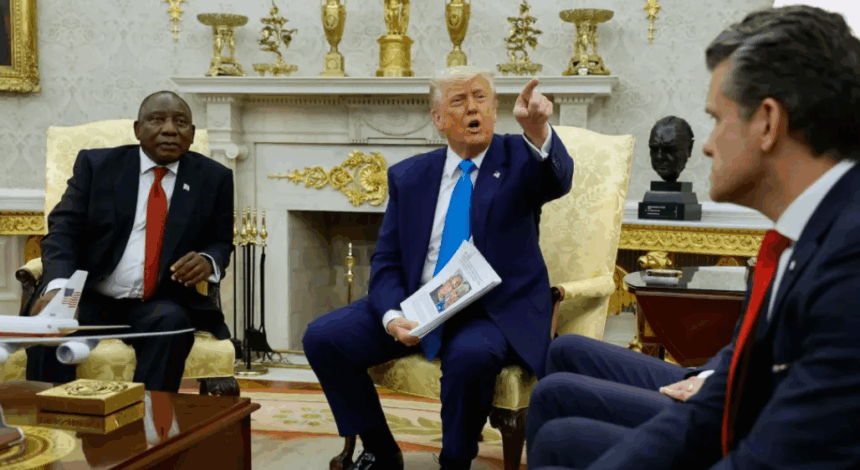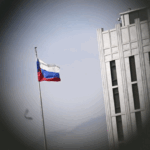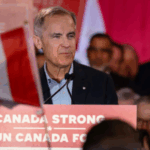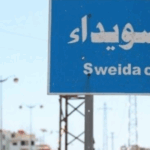Summary by Geopolist | Istanbul Center for Geopolitics:
It was supposed to be a standard diplomatic meeting — a handshake, polite smiles, some cameras, and a carefully worded joint statement. Instead, the Oval Office encounter last week between U.S. President Donald Trump and South African President Cyril Ramaphosa turned into an awkward and unsettling spectacle.
What began with warm banter quickly gave way to confrontation. Trump accused Ramaphosa of overseeing a “genocide” of white South Africans, particularly farmers. Without warning, he queued up a shaky, selectively edited video on a monitor in the room, demanding Ramaphosa and his delegation watch it. The video—filled with out-of-context soundbites and one falsely labeled mass grave—was an unsettling echo of internet conspiracy threads, not statecraft.
For Ramaphosa, a man who rose from anti-apartheid activism to lead South Africa’s democratic transition, the moment was surreal. Here was the president of the United States—not confronting him over a war or a trade dispute—but accusing his government of race-based violence using spliced YouTube clips and printouts, one of which allegedly included a photo from the Democratic Republic of Congo, not South Africa.
This moment came just days after the Trump administration opened a special refugee channel—for white South Africans only. While doors have been slammed shut for Afghan interpreters, Syrian families, and Central American asylum seekers, white Afrikaners—descendants of the group that enforced apartheid—were offered a unique welcome. The symbolism was unmistakable.
Behind Trump’s performance lies a broader myth that has found fertile ground among far-right circles: the idea that white South Africans are under siege, being murdered and dispossessed en masse. Elon Musk, born in South Africa, has echoed similar sentiments. But they don’t match reality.
South Africa’s crime problem is tragically real—but not racially targeted in the way Trump claims. The country’s homicide rate is high for everyone. In 2024, of the more than 26,000 murders recorded, just eight victims were farmers. White South Africans, who now make up just 7 percent of the population, account for under 2 percent of all murder victims. If anything, they remain the most insulated group from violent crime.
Trump’s fury was partly sparked by a new law Ramaphosa signed in January that allows for land expropriation without compensation—a tool meant to finally address a legacy of injustice where a white minority still owns most farmland. But the law is narrow, cautious, and still under judicial oversight. It’s not the “land grab” Trump imagines. And in practice, not a single farm has been taken without compensation.
In one especially jarring moment, Trump demanded Ramaphosa arrest Julius Malema, the firebrand opposition politician known for inflammatory rhetoric and for singing “Kill the Boer,” a liberation-era chant. Ramaphosa calmly reminded Trump that South Africa protects freedom of speech—and that Malema is not part of the government.
There was no policy win here. No agreement signed. Just confusion, frustration, and a diplomatic wound that won’t heal easily.
For many South Africans—Black, white, and everything in between—the meeting was painful to watch. It reduced the complexities of their post-apartheid journey to a crude narrative of racial revenge, one that feeds fear but ignores facts.
For American diplomacy, it was another message to the world: that under Trump, facts are negotiable, allies can be humiliated, and grievance politics doesn’t stop at the water’s edge.
And for Ramaphosa, it was a moment of patience and restraint. He stood in the Oval Office not just as the president of South Africa, but as a symbol of what his country has endured—and how far it still hopes to go.
Read more here.







